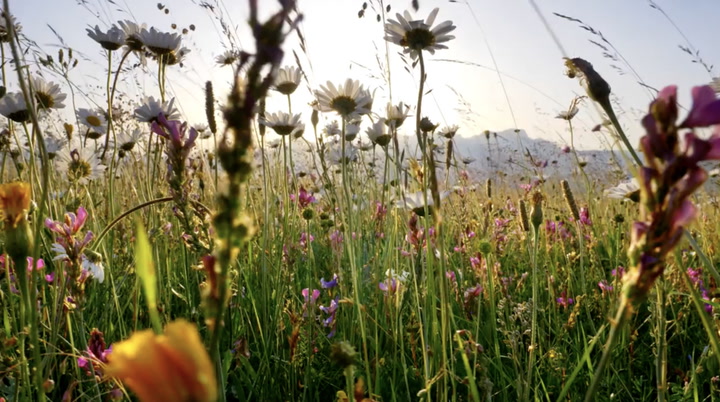Summary
Nobody wants to be *that* park visitor.
The warm air is starting to tickle your cheeks. The sun’s rays are beating down just a little warmer, and off in the distance, you can hear the distinct and utterly adorable sound of freshly hatched baby birds chirping as they await their daily worm. Yes, spring is nearly here, and with it, comes fantastic wildflower blooms, reminding us all that new beginnings are around the corner. However, before you pack up your camera and your hiking boots to see those blooms, there are several important considerations—one being that some of the most famous wildflowers in America are currently off-limits.
The golden poppies made their annual appearance in Lake Elsinore, California, in early February, a sight that typically attracts thousands of snap-happy visitors. However, this year, local officials closed key trails to see them, citing safety concerns.
According to The Los Angeles Times, officials closed all trails to Walker Canyon, after visitors trampled the blooms in 2019, potentially damaging root systems for years to come.
“Back in 2019, numerous safety incidents occurred on the trails and on our roadways,” Lake Elsinore Mayor Natasha Johnson told The Los Angeles Times. “Tens of thousands of people, as many as 100,000 in a weekend—people of Disneyland-sized crowds—were seeking to experience nature. They trampled the very habitat that they placed so high in regard and sought to enjoy.”
How can we improve this situation? It’s simple. Experts provided GoTravelDaily with valuable tips for responsibly visiting wildflower sites, emphasizing the importance of respecting natural spaces.
“Each park has unique landscapes, and late winter and early spring are great times to visit, especially desert sites,” a spokesperson for the National Parks Service (NPS) shared. “These public lands are visited by millions each year. Most are angling for incredible photos, but getting too close to the wildflowers and crushing them can ruin the experience for others and can damage the flowers themselves.”
Here are a few easy-to-follow tips that will allow you to enjoy these special flowers in full bloom while ensuring their safety for future generations.
Understanding Wildflower Etiquette
“Going off a marked path to make a shortcut or to explore can decrease plant diversity. Others will follow, resulting in disturbing plants and soil compaction, making it more difficult for rainwater to absorb,” Alice Kong, the director of the North American Native Plant Society, explained. “It fragments habitat. It increases the number of places that invasive seeds can enter, complicating management efforts.”
Kong added that once trampled, woodland species can take a long time to recover. Some habitats are particularly vulnerable; for example, “alvars, which have a thin layer of soil, and dunes, which are stabilized by grass roots.”
Stay on Marked Paths
To protect wildflowers, always stick to designated trails. This is essential for preserving the ecosystem while allowing everyone to enjoy the beauty of nature.
Think Creatively About Your Photos
Instead of trying to copy popular images from social media, aim to capture unique perspectives. Photographer Elisabeth Brentano suggests experimenting with angles.
“Get creative when it comes to your perspective. For instance, crouch low to take close-up shots of flowers, and play around with depth of field to create a unique aesthetic,” Brentano shared. “Alternatively, use a selfie stick or monopod with a wide-angle lens to take photos above the flowers, allowing you to stay on the trail. Look for trail sections that curve for more photogenic leading lines.”
Be Cautious About What You Share on Social Media
While there’s no harm in sharing stunning visuals, think twice before tagging specific locations in real-time. This can help disperse crowds and mitigate pressure on individual sites.
“If an area lacks proper facilities to handle a surge in visitors, avoid sharing it with a location tag on social media,” Brentano added. “Vague mention in your caption is acceptable; however, real-time posting can lead to overwhelming crowds during peak bloom times.”
The NPS emphasizes this point, stating, “We understand the desire to share stunning flower photos, but it may be best to refrain from tagging exact locations. This prevents overwhelming specific areas, as larger groups can significantly impact local ecosystems.”
Visit During Off-Peak Hours
If you want to avoid crowds while protecting the flowers, consider visiting mid-week, as suggested by Brentano.
“Visiting earlier in the day during the week is preferable,” she noted. “Also, check local parks’ websites and social media channels for the latest information on parking, closures, recommended viewing spots, and responsible visiting tips.”
Never, Ever Pick the Flowers
Just as you should leave shells on the beach, the NPS emphasizes the importance of leaving flowers untouched.
“Picking flowers is prohibited and can incur a hefty fine,” the spokesperson stated. “These areas provide habitat for numerous species, and removing wildflowers disrupts the ecosystem. Wildflowers attract pollinators and contribute to seed production for future seasons.”





